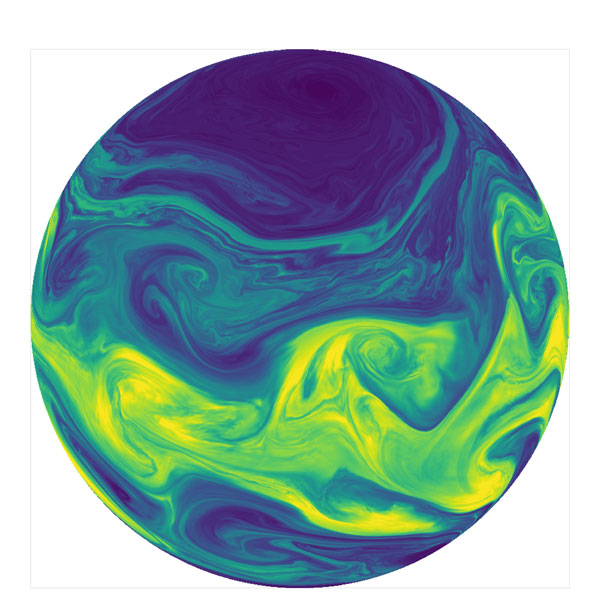
Climate model prepares for exascale
Sandia computational science researchers notched several successes in preparing DOE’s Energy Exascale Earth system model “E3SM” for the exascale era. In the spring, the team performed calculations with Sandia’s new atmosphere dynamics code on Summit, the world’s fastest computer at the time, using 27,600 GPU processors simultaneously, achieving record-setting performance on a benchmark problem. Separately, Sandians integrated several novel algorithmic developments into E3SM to double the model throughput for the upcoming science campaigns. This has tremendous impact because the campaigns consume a year of supercomputer allocation. (1000)
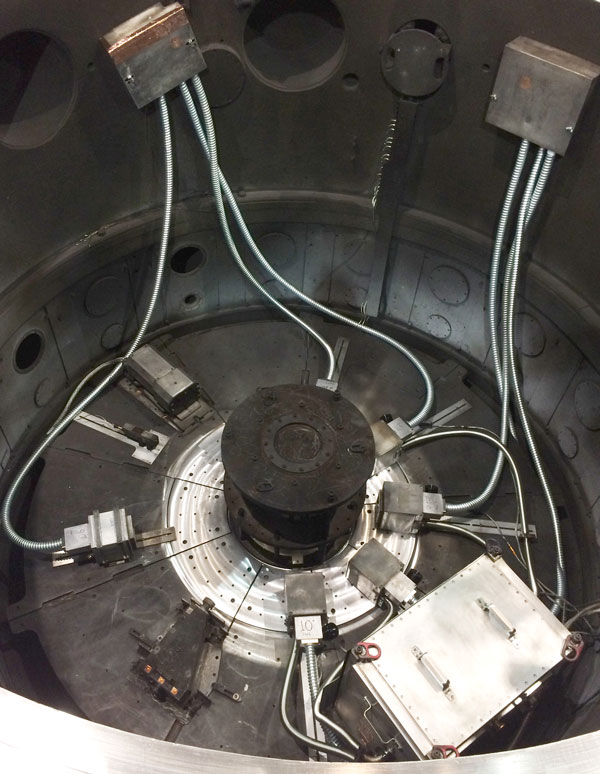
Improved warm X-ray sources for survivability
Ensuring that the U.S. stockpile is effective requires an ability to test electronics and materials under intense X-ray environments. Sandia demonstrated record yields and reproducibility of warm X-ray sources on the Z machine, improving the quality of experimental data related to hostile survivability studies. The warm X-ray yield was increased by 40% and these sources are being applied to assessment of new engineering materials and to validation of numerical models for system-generated electromagnetic pulse resulting from extreme radiation exposure. (1000)
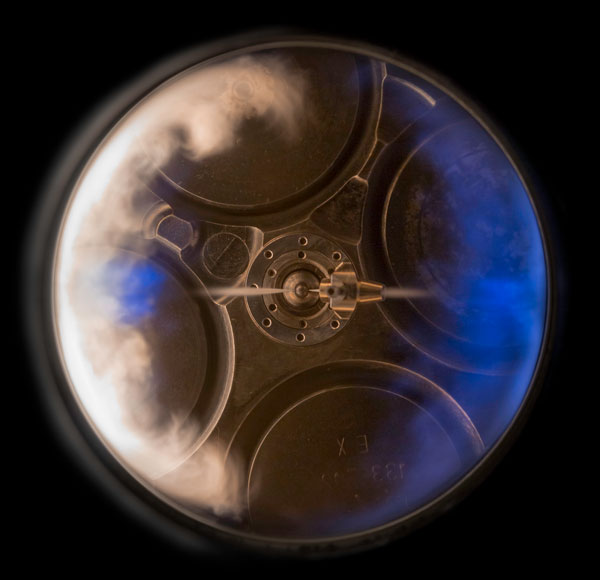
Ducted fuel injection
Sandia received a 2020 Outstanding Technology Development Award from the Far West Region of the Federal Laboratory Consortium for Technology Transfer for “Ducted Fuel Injection for Clean, Sustainable Diesel Engines and Fuels.” Sandia has worked with partners Ford and Caterpillar through Cooperative Research and Development Agreements to develop the technology, which is capable of simultaneously suppressing soot and nitrogen oxide emissions from diesel engines. (8000)
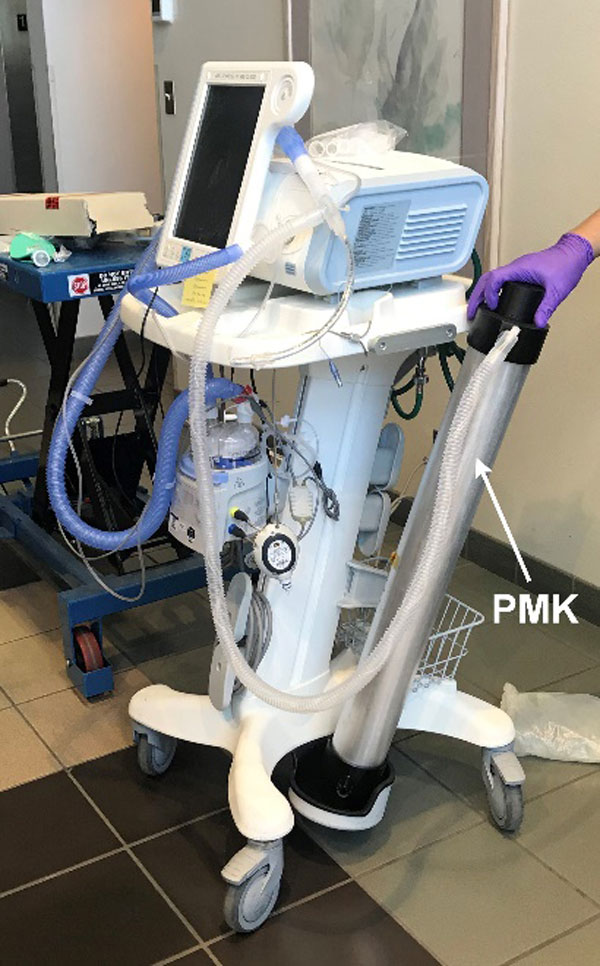
COVID-19 research
Within days of the work-from-home order, Sandia established a COVID-19 Rapid Response Research and Technology Transfer Program spanning fundamental research through technology transfer. Assistance was provided to local medical providers and Sandia executed 80 R&D and technology transfer activities. (1000)
Researchers developed a conversion kit to upgrade Bi-level Positive Airway Pressure (BiPAP) machines into fully functional ventilators using an expiratory decontamination component and ultraviolet light, ensuring elimination of coronavirus and other pathogens. Sandia produced 100 respiratory machines that were delivered to New Mexico hospitals. (1000, 2000, 5000, 6000, 8000)
Using Sandia’s high-performance computing clusters, researchers developed a model to predict the need for medical resources and a framework for predicting uncertainty. The resource model turns disease-spread predictions into actionable information about healthcare system resources needed at the state and county level. (1000, 8000)
Predicting the strength of metals
Sandia researchers have developed a simple theoretical model that can accurately predict the maximum strength of pure metals and alloys, without the use of adjustable parameters. The strength of metals is a crucial factor in the design of reliable, cost-effective materials for use in energy-efficient vehicles, aircraft and renewable energy systems, such as wind turbine gearboxes. This direct link between theoretical calculations and practical measurements provides fundamental insight with strong implications for the design of new materials. (1000, LDRD)
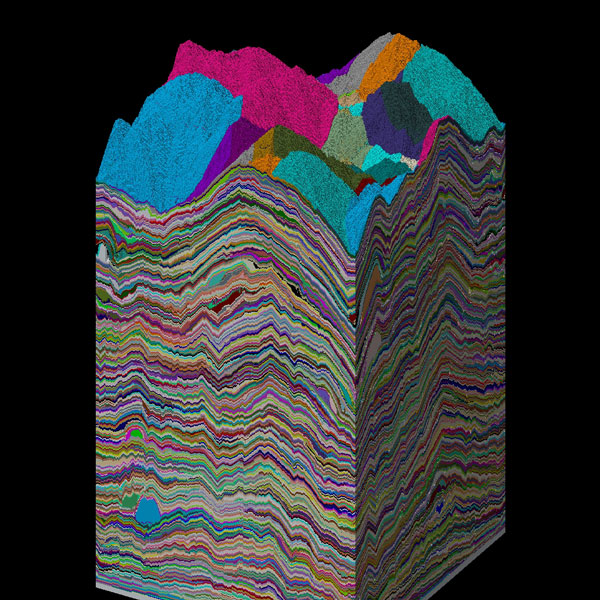
Materials in extreme environments
Sandia scientists are teaming to unravel the mechanisms of material degradation under extreme conditions. Accomplishments include new techniques for recovering samples after exposure to the world’s brightest X-ray pulses at the Z machine and shock at the Dynamic Integrated Compression Experimental Facility; first-of-a-kind numerical methods for imaging, parsing and analyzing composite material microstructures; and new radiation, shock, electromagnetic and thermal multiphysics coupling modalities with the SCEPTRE and ALEGRA codes incorporating novel material properties determined with atomistic simulation, to support wide-ranging science and defense programs. (1000, LLNL, LANL, ANL, NNSS, LDRD)
Fusion on Z and beyond
A laboratory capability to produce multi-megajoule (MJ) thermonuclear fusion yields would revolutionize studies of nuclear explosive package physics and weapon survivability. Sandia has moved closer to this challenging long-term goal by developing and validating a new theory for scaling magnetically driven fusion targets from the Z machine today to multi-MJ performance on a larger, next-generation pulsed-power machine; predicting and demonstrating tenfold improvement in fusion output on Z; and doubling the amount of tritium used on Z for improved plasma diagnosis and operational understanding. (1000)
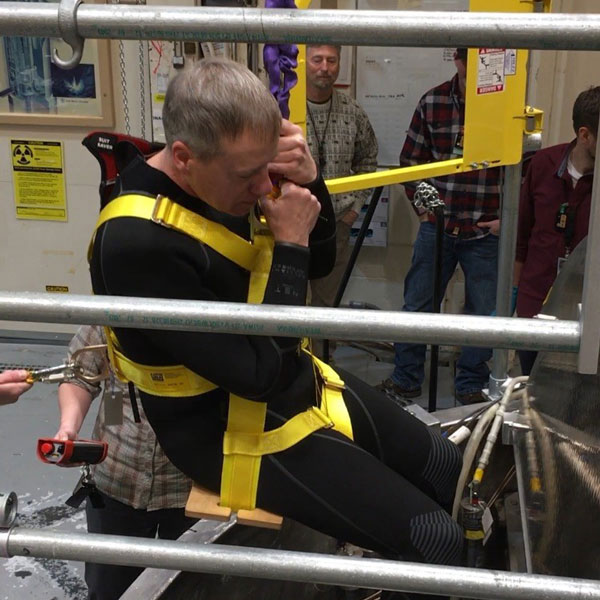
Annular Core Research Reactor recovery
The Annular Core Research Reactor was successfully returned to operation supporting nuclear weapons programs after a breached reactor safety rod was discovered. New and noteworthy activities planned and safely executed included: removing a damaged rod from the reactor pool; inspecting and qualifying replacement rods after decades of storage; precision installation and testing with new hardware; and ultimately suspending a diver from a crane to reach inaccessible areas in the pool tank. Much of the work was executed before and during the COVID-19 pandemic. (1000)
JaqalPaq quantum software stack is released
Sandia’s QSCOUT (Quantum Scientific Computing Open User Testbed) Software Stack team created a new quantum assembly language called Jaqal (Just another quantum assembly language) and released an open-source Python programming package for it called JaqalPaq on GitLab. JaqalPaq offers an unmatched level of control, including explicit parallelization, access to underlying laser pulse sequences, comprehensive metaprogramming and a full emulation suite. JaqalPaq is a key enabler for Sandia’s first externally accessible quantum computing testbed. (1000, 5000)
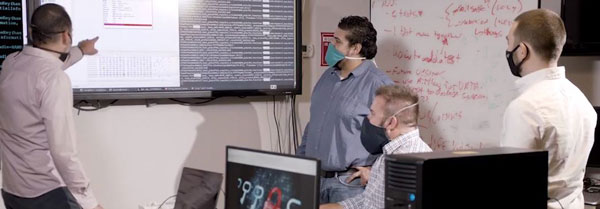
HECATE wins R&D 100 Award
Sandia’s High-density Evaluator of Commercial off-the-shelf Applications for Trust and Efficacy (HECATE) won a 2020 R&D 100 Award in the Software/Services category from R&D World. The awards are given annually in recognition of exceptional innovations. An analysis platform that automates the identification of software supply chain risks and provides heuristics on suspect behaviors, HECATE uses virtual and physical assets to create a wholly immersive environment to install, execute and observe software. (9000)
Quantum Systems Accelerator stands up
Sandia and Lawrence Berkeley National Laboratory stood up the Quantum Systems Accelerator, one of five DOE-funded National Quantum Information Science Research Centers. The QSA, funded at $115 million over five years, will engage a multidisciplinary team comprising researchers from 15 labs and universities to advance quantum computing technologies across a broad set of quantum platforms to help build the quantum ecosystem and educate the future quantum workforce. (1000, 5000)
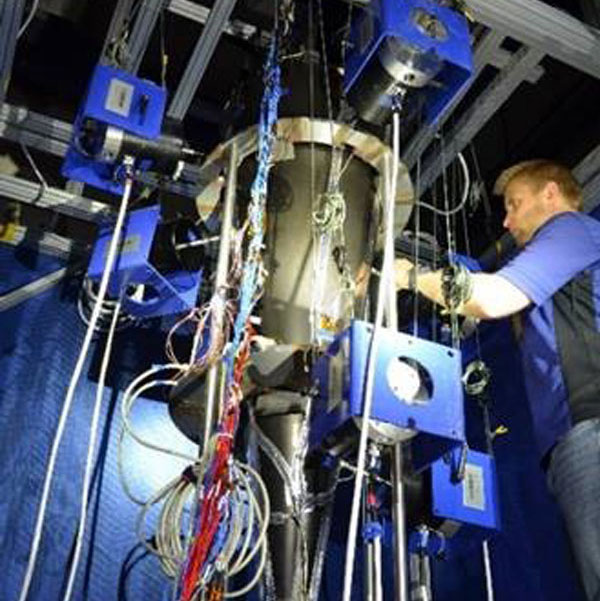
Advances in reentry qualification
Sandia, with the United Kingdom’s Atomic Weapons Establishment, has demonstrated new methods for qualifying weapons to reentry environments. In a partnership between the Joint Technology Demonstrator, Delivery Environments and Verification & Validation programs, Sandia performed detailed simulations using the Sierra Mechanics code suite to design multi-axis vibration and combined acceleration, vibration and spin tests. Testing was performed on a demonstrator system at Sandia’s large-scale test facilities. These new analysis and testing capabilities pave the way for agile qualification of future reentry systems. (1000, 2000)
Advanced modeling and simulation
Working with Sandia’s SIERRA code developers, the Mobile Guardian Transporter modeling and simulation team developed a complex finite element model capable of accurately simulating a trailer crash to assess safety and security of the system and its contents. This close working relationship between code developers and analysts reduced runtime by half for pretest predictions of the Prototype 1 test, enabling a powerful simulation strategy that includes assessing uncertainty for the MGT system level qualification. (1000, 6000)
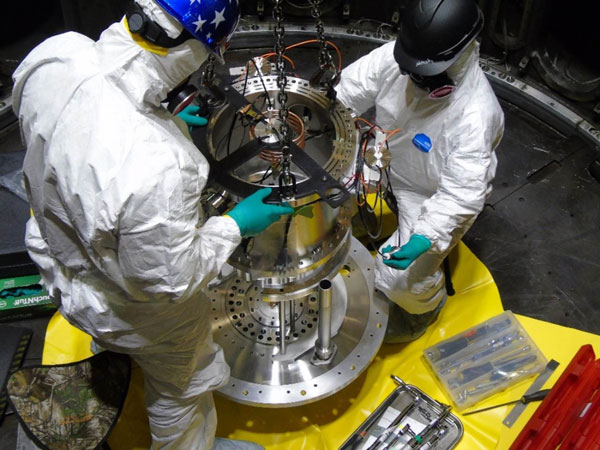
Record plutonium pressure achieved on the Z machine
An accurate understanding of the behavior of materials at extreme pressures is central for successful stockpile stewardship, including annual assessments, safety analysis, design within the modernization programs and more. In 2020, Sandia successfully developed new ways to perform material experiments on the Z machine, reaching and accurately diagnosing record high pressures in platinum and plutonium. In partnership with Los Alamos National Laboratory, Sandia accomplished close to 22 Mbar, or 22 million atmospheres, pressure in a shock experiment in platinum and a record high ramp compression pressure in weapons-grade plutonium. (1000)
Concentrating Solar Power Library Archive
The Technical Library and Concentrating Solar Technologies partnered to establish the world’s only publicly available, digital collection of concentrating solar power historical documents, dating back to the program’s inception in the 1970s at Sandia. This unique, full-text collection of Sandia documents and external reports is accessible globally via Sandia’s website for use by the larger scientific community. The archive sets a precedent for the continued exchange of historical information in the renewable energy field among domestic and international partners. (1000, 8000)
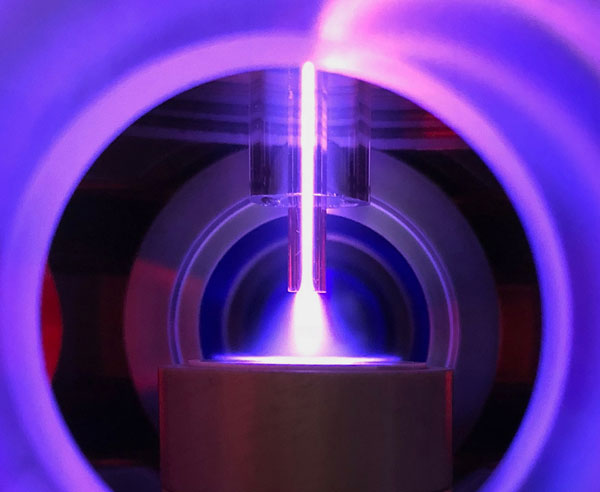
Sandia Plasma Research Facility
DOE funded the Sandia Plasma Research Facility to provide cutting-edge experimental and modeling capabilities to the low-temperature plasma community at no cost. Combining advanced optical diagnostics, mass spectroscopy, massively parallel simulations and extensive expertise, the PRF connects the Sandia NM and CA sites to advance LTP science and application. Working at the frontier of Discovery Plasma Science, the PRF enables novel research in areas such as plasma medicine, plasma-assisted catalysis, water treatment and more. (1000, 8000)